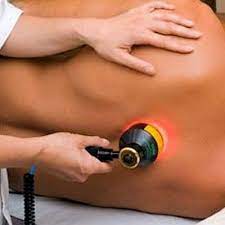IV Low Laser - Abu Dhabi - Dubai
Chronic wounds are wounds that have not healed within the expected timeframe or have become stalled in the healing process. They can result from various conditions such as diabetes, vascular diseases, pressure ulcers, or venous insufficiency. Treatment for chronic wounds typically involves a multidisciplinary approach and may include the following:
- 1. Wound Assessment and Management: The first step in treating chronic wounds is a thorough assessment to determine the underlying cause, evaluate the wound characteristics, and identify any contributing factors. The wound is then managed by ensuring a clean and moist environment, proper wound dressing, and appropriate wound care techniques.
- 2. Debridement: Debridement is the removal of dead or non-viable tissue from the wound, which can promote healing. This can be done through various methods, such as sharp debridement (using a scalpel or scissors), mechanical debridement (using dressings or irrigation), enzymatic debridement (using topical enzymes), or surgical debridement.
- 3. Infection Control: Chronic wounds are prone to infection, which can impede healing. If an infection is present, appropriate antimicrobial therapy may be prescribed. It's important to address any underlying infection and maintain proper wound hygiene.
- 4. Pressure Offloading: For wounds caused by pressure, such as pressure ulcers, offloading the affected area is crucial. This can involve the use of specialized cushions, mattresses, or other devices to redistribute pressure and relieve stress on the wound.
- 5. Vascular Assessment and Management: Adequate blood supply is vital for wound healing. If vascular disease is a contributing factor, vascular assessment and interventions, such as angioplasty or bypass surgery, may be necessary to improve blood flow to the wound area.
- 6. Advanced Wound Care Therapies: In some cases, advanced wound care therapies may be used to promote healing. These can include negative pressure wound therapy (NPWT), hyperbaric oxygen therapy (HBOT), growth factors, bioengineered skin substitutes, or cellular and tissue-based therapies.
- 7. Nutritional Support: Proper nutrition plays a vital role in wound healing. A healthcare professional may assess the individual's nutritional status and provide recommendations for a balanced diet or nutritional supplements to support the healing process.
It's important to consult with a healthcare professional or wound care specialist to evaluate and manage chronic wounds. They can develop an individualized treatment plan based on the specific characteristics and underlying causes of the wound. Regular monitoring and follow-up care are essential to assess the progress of healing and make any necessary adjustments to the treatment approach.

